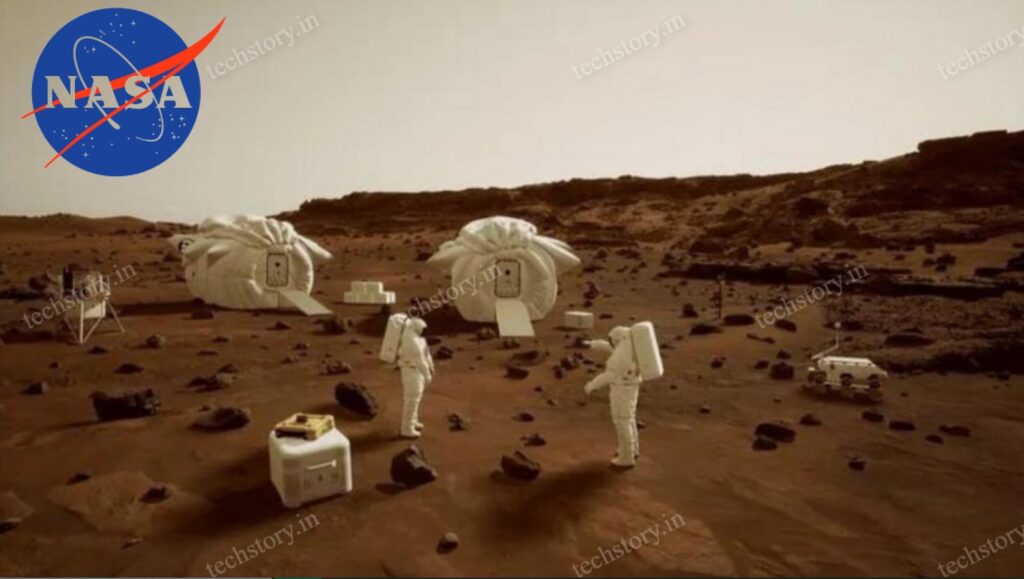-
NASA VR Metaverse was introduced to train astronauts for missions aboard the Lunar Gateway Space Station.
-
The Gateway, part of NASA’s Artemis Program, aims to support lunar surface missions and advance deep space exploration.
-
Through virtual reality training, astronauts are prepared to deal with challenges such as isolation and limited communication in deep space.
According to a NASA blog post, “When they slip on their headsets, they’re not just seeing the station—they’re in it.” While many of us explore the metaverse to trade assets or enjoy virtual realities with legless avatars, NASA and SpaceX astronauts use it to prepare for life aboard the yet-to-be-built Gateway space station.
NASA VR Metaverse: Preparing Astronauts for Life on the Lunar Gateway Space Station
Astronauts preparing for missions traditionally use physical and computer-based simulators. However, with modern virtual reality (VR) headsets and advanced spatial computing technologies, NASA has developed a more immersive training method.
This VR Metaverse allows astronauts to gain essential skills to work and survive in a 3-D environment, simulating life on the Gateway space station.
NASA describes Gateway as a “next-generation science lab, solar-powered spaceship, and home-away-from-home.” It is under development and aims to support international astronauts.
This spatial computing training immerses astronauts in Gateway’s virtual environment, helping them familiarize themselves with their future deep space home long before it exists physically.
The Gateway Role in the Artemis Program
Gateway is set to debut in space in 2025, with its critical power and propulsion systems planned for orbit around the Moon. This small but significant space station is vital to NASA’s Artemis Program. It aims to return humans to the Moon and pave the way for Mars missions.
According to NASA, “Gateway is a vital component of the NASA-led Artemis mission to return to the Moon and chart a path for the first human mission to Mars. The small space station will be a multi-purpose outpost orbiting the Moon and providing essential support for lunar surface missions, a destination for science, and a staging point for further deep space exploration.”
The astronauts assigned to Gateway will undertake the unprecedented task of being the first crew of a space station to live and work in deep space, which is approximately 386,243 kilometers from Earth. For comparison, astronauts at the International Space Station (ISS), operational since 1998, are about 400 kilometers from Earth.
ALSO, READ: BIC brings African talents to life at a first-of-its-kind metaverse gallery in the region.
Advanced Training for Deep Space Missions
NASA’s innovative approach to training through the VR metaverse highlights its commitment to cutting-edge space exploration technology.
This training prepares astronauts for the unique challenges of living and working in deep space. Unlike typical metaverse activities, NASA and SpaceX’s training focuses on preparing astronauts for missions to the Gateway space station and beyond.

The Artemis Program, which includes developing the Gateway space station, is part of the broader vision to establish a sustainable human presence on the Moon. It will eventually send humans to Mars. The Gateway will serve as a staging point for lunar missions and a hub for scientific research. It will support missions to the lunar surface and beyond.
Living and working on the Gateway space station will present unique challenges. The station’s distance from Earth, around 386,243 kilometers, means astronauts will face isolation and limited real-time communication with mission control.
NASA’s training prepares astronauts for these challenges by immersing them in realistic scenarios that simulate deep space conditions. The Gateway space station will function as a multi-purpose outpost, supporting scientific research and lunar surface missions.
VR metaverse training allows astronauts to practice operating the station’s systems, conducting scientific experiments, and performing maintenance tasks in a controlled, virtual environment. This hands-on experience is crucial for building confidence and skills to succeed.
The Future of Space Training
As NASA continues to develop the Artemis Program and prepares for future Mars missions, VR and spatial computing training will likely expand. This innovative approach enhances the training process and demonstrates the potential of immersive technologies in various fields beyond space exploration.
By integrating VR into its training programs, NASA sets the standard for astronaut preparation for space travel, ensuring astronauts have the knowledge and skills to explore the final frontier.
Conclusion: Pioneering VR Space Exploration Future
The NASA VR platform for astronaut training represents a significant advancement in space mission preparation. Spatial computing training allows astronauts to immerse themselves in their future environment.
They gain valuable experience and skills on the Gateway space station. This training, part of the Artemis Program, is crucial for NASA’s long-term lunar and Martian exploration goals.
ALSO, READ: Navigating the Future of Europe’s Metaverse: The Influence of Teamwork.
The development of the Gateway space station and VR implementation underscores NASA’s innovative approach to space exploration. By embracing advanced technologies, NASA continues to push human space exploration.
This ensures that astronauts are well-prepared for living and working in deep space. As we look towards the future, integrating VR and spatial computing into astronaut training will likely play a pivotal role in the success of missions to the Moon, Mars, and beyond.
